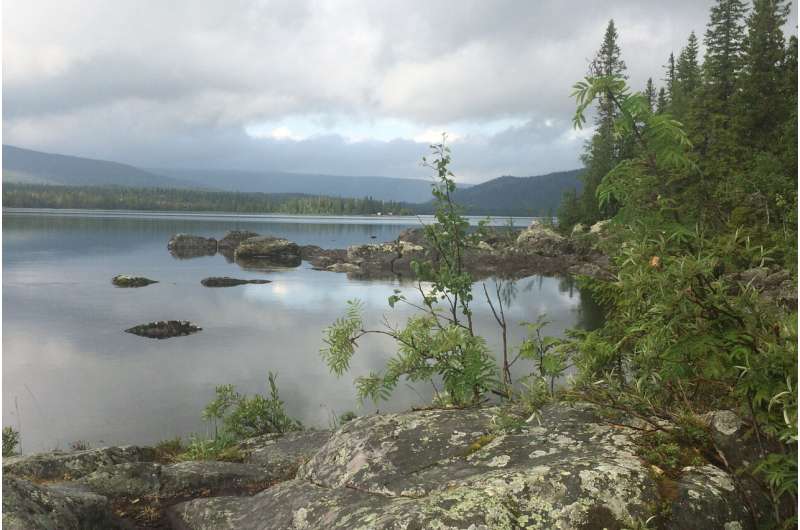Methane emissions from northern lakes are higher during the daytime

Methane fluxes from lakes are considerably higher during the day than the night, according to a study conducted by LiU researchers. Consequently, the research group says that the contribution of northern lakes to global methane emissions is 15% lower than previously estimated. The study is published in PNAS, Proceedings of the National Academy of Sciences.
Freshwater lakes, rivers and reservoirs are the second greatest source of emissions of methane, the second most important greenhouse gas for global warming. Methane is also the greenhouse gas that has increased most in the atmosphere over the past 250 years."The methane flux has increased irregularly, and we don't actually know why," says Anna Sieczko, postdoctoral researcher at Environmental Change in the Department of Thematic Studies who, together with colleagues at Linköping University and Umeå University, has published the PNAS paper.
Methane fluxes differ over time and space, and many researchers are trying to find and quantify all sources and sinks, and to understand the flux regulation. The LiU research group, led by Professor David Bastviken from Environmental Change, has measured methane fluxes from lakes—recently discovered to be the second largest natural methane source on Earth.
Anna Sieczko and her colleagues made 4,580 measurements to compare day and night methane fluxes on four lakes of different types during the ice-free period, from early summer to autumn."Previously methane fluxes from lakes were often measured primarily during daytime, but now we have a representative set of measurements covering both daytime and nightime," says Anna Sieczko.
A clear pattern emerged: Fluxes of methane were considerably higher from 10:00 to 16:00 in 80% of the cases. There are indications that the wind, which is usually stronger during the day, creates turbulence in the water and thereby increases the methane emissions. The wind can explain most, but not all of the variability, which indicates that other environmental factors can influence the day-night differences.
"Current calculations of methane emissions from freshwater lakes don't include variation between day and night, which means the contribution from northern lakes has been overestimated by about 15%," says Anna Sieczko.
"It's essential that we, as in this study, identify and consider variations in time and space when estimating all large-scale fluxes of greenhouse gases. If we don't, there's a risk that climate models will be inaccurate and that our priorities of flux mitigation measures become suboptimal. Estimates of all methane sources and sinks are connected via the global methane budget and inaccurate estimates of some fluxes affect our understanding of the whole budget," says David Bastviken.
More information: Anna K. Sieczko el al., "Diel variability of methane emissions from lakes," PNAS (2020). www.pnas.org/cgi/doi/10.1073/pnas.2006024117
Journal information: Proceedings of the National Academy of Sciences
Provided by Linköping University




















